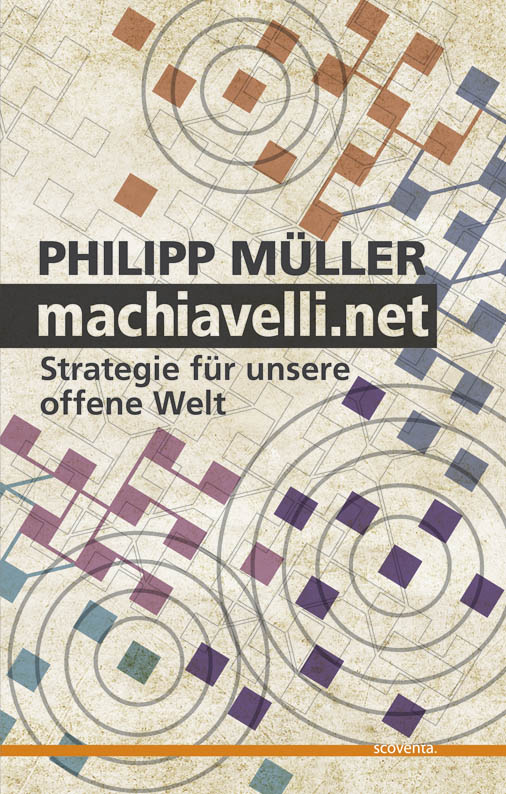C-H-A-O-S and the Open Value Chain
John Maynard Keynes once famously quipped that “Practical men, who believe themselves to be quite exempt from any intellectual influence, are usually the slaves of some defunct economist.”There are four authors of the 20th Century that have become background knowledge shared across most global cultures that are keeping us from fully seeing the opportunities of social media empowered collective action and its progressive potential. They are Coase, Horkheimer/Adorno, Olson, and Schelling.
By foregrounding their solutions (to yesteryears problems) and placing them in their historical context, maybe, we can make room for new logics of collective action.
In 1937, Coase published the Nature of the Firm, defining the idea of transaction costs in order to address a puzzle that mainstream economics had ignored at the time: the question of why firms exist in a world, where markets were assumed to be the most efficient allocators of resources. The analytically powerful tool of transaction costs allowed him to ask situation-specific questions on when a firm might be more efficient then market-based transactions. He clearly operationalized his framework, by stating that other things being equal, “a firm will tend to be larger, the less the costs of organizing and the slower these costs rise with an increase in the transactions organized.” (Coase 1937)
He is wrong, at least in some situations: a new form of (non)organization emerges when transaction costs fall so dramatically that neither a market nor a firm is necessary to integrate global supply chains, as we can observe in the case of Wikipedia or Linux.
In 1947, Horkheimer and Adorno published their Dialectics of Enlightenment, a small book of essays that they conceptualized as a “message in a bottle” to a future audience. Their chapter on the culture industry is a scathing attack on art in mass society. They describe the complex environment of capture where industry plays to a mass audiences taste that itself becomes streamlined by industry. Art looses its relevance as an outside critique of existing power asymmetries.
Their media critique hinged on one technological factor, namely that 1-to-N media outperform N-to-N media. They do not imagine a world of a thousand blossoming blogs and youtube-publishing grandmothers. Most media critics have been raised on their scenario, therefore are not good at imagining a world that is neither elitist nor captured.
Mancur Olson’s Theory of Collective Action (1964) is based on the simple recognition of the category mistake that the common collective interest of a group does not automatically lead to harmonious collective action by its members (I agree). His words “rational, self-interested individuals will not act to achieve their common or group interest” have been seared into our unconsciousness. The elegance of his argument has led us to assume free-riding wherever and whenever at least two people get together. We tend to forget that his argument relies on several contingent assumptions concerning transaction costs of collective action (that they are fairly high) and on how we understand human agency (ignoring that most of what we value is inter-subjectively derived).
Thanks to Mancur Olson, we have lost the ability to explain why people act collectively beyond their narrowly defined individual self-interest. So when confronted with the phenomenon, we have been denying its existence. And even after being confronted with lots of empirical evidence (think Linux, Wikipedia, or Mother Teresa) we are struggling to develop the vocabulary to talk about open value chains, commons-based peer production, and massive collaboration. The poverty of our economics (in the original sense of good husbandry) has forced us to rely on a fairly undeveloped metaphorical language of Marcel Maus’ gift economy, the communal cooking pot, or the North American Potlatch system to make sense of something as intuitive as intersubjective coproduction.
Thomas Schelling took the idea of rational interest to the extreme. By postulating a situation of an absolute threat to individual and collective survival (the anarchy of the international system under the threat of nuclear annihilation), he could get rid of all inter-subjectivity. Assuming a world without language (or a world where language had no value, because it would not carry weight), he was able to concentrate on signaling, the thinnest form of co-action. The beauty of signaling is that it is self-explanatory and clear, no messy inter-subjective understanding needed.
However, he purposely ignores all aspects of social life that depend on humans working together to find out something that neither of them knows ex ante. As good acolytes of Thomas Schelling we assume that “talk is cheap” and facebook is suspect. Never mind that anything human that is of value is inter-subjectively created.
Nietzsche said, you must have chaos within you to give birth to a dancing star, but definitely, we should not rely to much on C-H-A-O-S, when constructing the political theories of tomorrow.
Keep an open mind, relearn to speak inter-subjective philosophy, ignore contract thinking in political theory and economics, learn from what you see around you, develop an appreciation for new logics of collective action, and start building open value chains and communities of practice. Imagine what Machiavelli would write about, if he would would write today.
 Author of machiavelli.net, proud father of three, interested in shaping network society. Welcome to my blog.
Author of machiavelli.net, proud father of three, interested in shaping network society. Welcome to my blog.
Philipp, love the post. Frameworks like C-H-A-O-S’s are simply tools to understand phenomena around us. Indeed, they are very useful to make sense of different pieces and to communicate to each other about them. But only because one has a hammer, does not mean that all things are nails. I second your call to learn from what we see and create new tools for addressing new phenomena. Like Wittgenstein once quipped: Do not think, but look.
Amazing how the thoughts of Olson and predominantly Coase still lurk in so many minds. Entries like this one should be posted every day to remind us of the contrary!
Luckily, there are other currents of thought: like the research of Margaret Gilbert on collective intentionality and her economic pendant Elinor Ostrom. Giving her the Nobel Prize was the first step on acknowledging that human beings are more than a “homo oeconomicus”.
The value network analysis method would be a way to operationalise both non tangible values and incentives encomprised in Gilbert’s and Ostrom’s assumptions and to integrate them in economic strategies (and that is increasingly happening) and, why not, also in political strategies (and that still hasn’t happened yet).